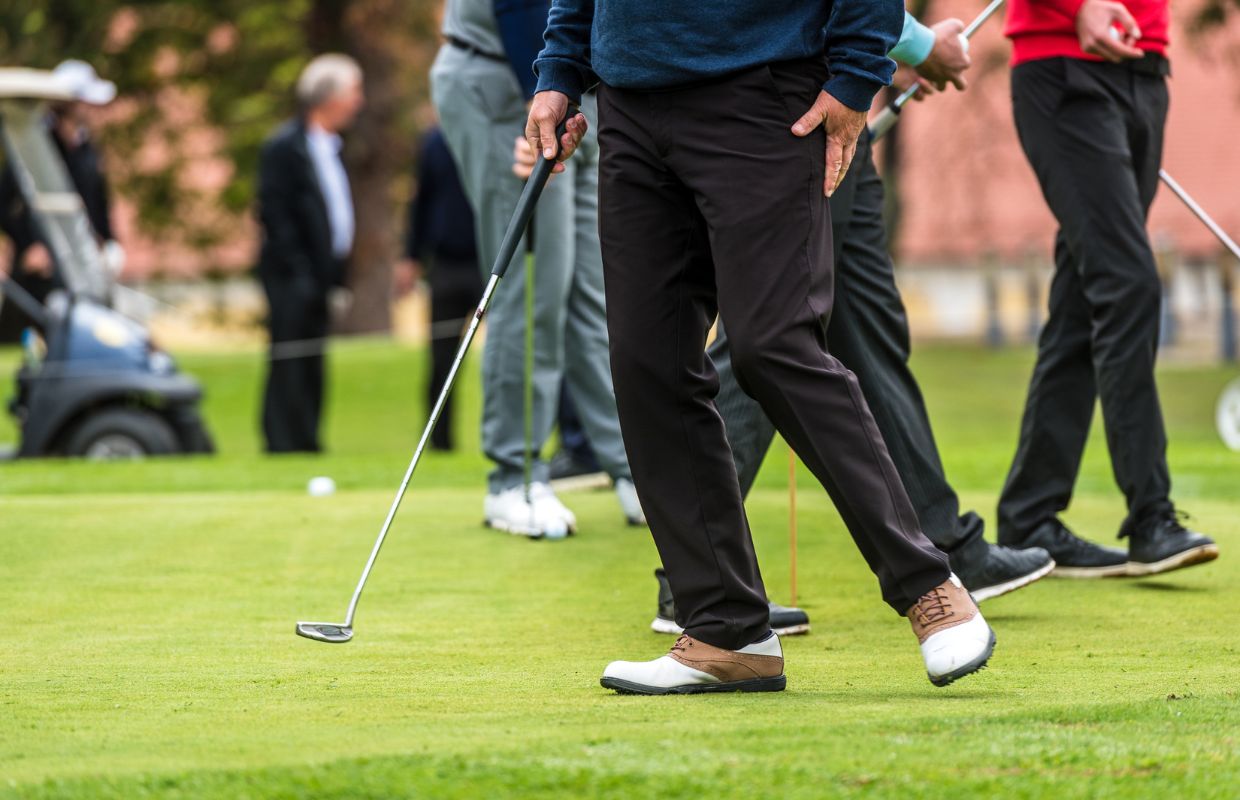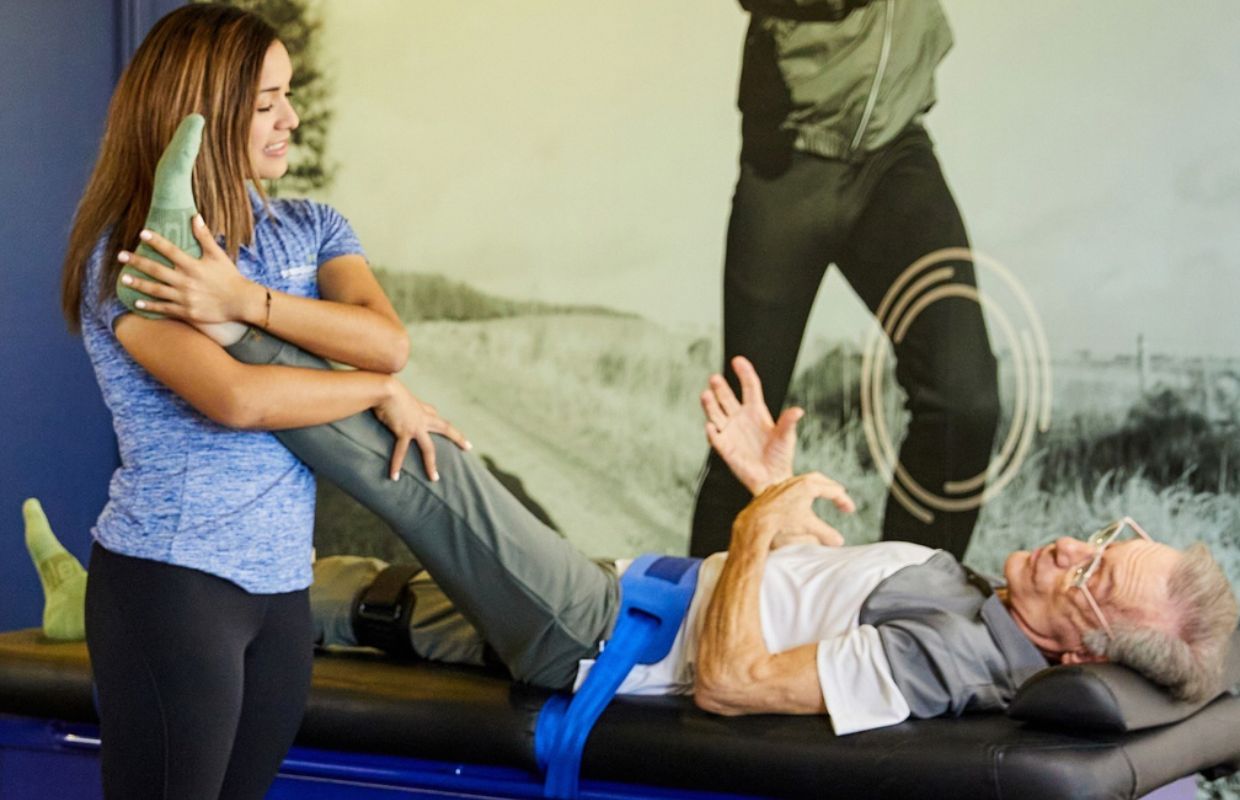
A Golfer’s Guide to Injury Prevention and Management
Just like any other athletes or outdoor enthusiasts, golfers are prone to aches, discomfort, and injuries. The repetitive motions, strain on specific muscles, and powerful swings involved in golf sometimes take a toll on players, which can be far from enjoyable. Imagine playing and struggling through 18 holes with discomfort in your shoulder or elbow. It will not only affect your performance but also rob you of the joy of the game.
Whether you’re an experienced golfer or just starting out, gaining an understanding of the common injuries in golf and learning about the effectiveness of preventative measures, such as stretches for back pain, is crucial for improving your performance and reducing discomfort.
Understanding Why Golfers Get Injured
Golf, with its unique set of challenges, can make golfers susceptible to various injuries due to the sport’s specific demands, such as precision, coordination, and athleticism. Understanding these challenges is crucial for golfers to take necessary precautions and prevent injuries on the course.
Some of the most common reasons why golfers get injured are:
Poor Swing Mechanics
Incorrect swing mechanics can place excessive stress on different parts of the body, leading to overuse injuries. When the swing technique is flawed, it can lead to compensatory movements that put strain on muscles, tendons, and joints. Common examples include an overly tight grip, improper weight shift, or an inconsistent swing plane.
Overuse and Repetitive Motions
Golf demands repetitive movements that place stress on the muscles and joints, leading to overuse injuries. The repeated swinging motion, particularly with high-impact swings, can lead to conditions such as golfer’s elbow (medial epicondylitis) or tendonitis and even stress fractures. The cumulative effect of repetitive motions can cause microtrauma to tissues over time, resulting in inflammation and discomfort.
Lack of Warm-up
Failing to properly warm up the body before playing can increase the risk of injury. Golf requires a combination of flexibility, strength, and coordination. Without an adequate warm-up routine, muscles and joints may not be properly prepared for the physical demands of the game. This can lead to muscle strains, ligament sprains, and other acute injuries.
Equipment-related Issues
Ill-fitted clubs, poor-quality grips, or using the wrong type of equipment can contribute to injuries. Using clubs that are too long, too heavy, or have improper shaft stiffness can negatively impact swing mechanics and place undue stress on the body.
Grips that are too small or too large can affect control and lead to compensatory movements that increase the risk of injury. It is important to ensure that equipment is properly fitted to individual body proportions and swing characteristics.
Lack of Muscle, Tendon, and Ligament Conditioning
Golf requires a certain level of physical fitness and conditioning to perform well and reduce the risk of injury. Insufficient strength and flexibility in key muscle groups, tendons, and ligaments can make the body more susceptible to strains or other injuries. Implementing a regular strength and flexibility training program specific to golf can help strengthen the muscles involved in the swing and improve overall stability and range of motion.
Exploring Common Golf Injuries
Knowing the areas and muscles in your body that are more prone to injuries in golf can make you more cautious and help you take preventive measures on the course.
Upper Body Injuries
- Golfer’s elbow (medial epicondylitis): This condition involves aching and inflammation on the inner side of the elbow due to repetitive strain and overuse of the forearm muscles involved in the golf swing.
- Shoulder impingement: The repetitive motion of the golf swing can lead to shoulder impingement, causing discomfort and limited range of motion in the shoulder joint.
- Rotator cuff injuries: The rotator cuff muscles in the shoulder can be prone to strains, tears, or tendonitis due to the rotational and forceful movements involved in the golf swing.
- Wrist sprains and strains: The wrists can be subjected to excessive force during the swing, leading to sprains, strains, or even ligament tears.
- Neck Injuries: Neck injuries can occur in golf, particularly among new golfers who are not accustomed to the repetitive twisting motion involved in the swing. After hours of swinging the club and hitting balls, the neck muscles may shorten and go into spasm, causing aches and restricting movement.
Lower Body Injuries
- Lower back discomfort: The rotational forces generated during the golf swing can place stress on the lower back, leading to muscle strains, herniated discs, or other spinal conditions. Stretches for back pain are advisable in these cases.
- Hip strains: The repetitive twisting motion in golf can strain the hip muscles, leading to discomfort and limited mobility.
- Knee injuries: Golfers may experience knee injuries such as meniscus tears or patellofemoral pain syndrome, which can result from the rotational forces and weight transfer during the swing.
- Achilles tendonitis: The repetitive motion of walking and swinging in golf can put strain on the Achilles tendon, leading to inflammation and discomfort.
Other Injuries
- Trigger Finger: Golfers may also experience trigger finger, a condition where the finger gets stuck in a bent position and then suddenly straightens with a snap or pop. This can result from the repetitive gripping and release of the club, irritating the tendons and leading to inflammation and finger stiffness.
- Sunburn and skin damage: Spending several hours on the golf course exposes golfers to the risk of sunburn and skin damage. It is important to protect the skin with appropriate clothing, hats, and sunscreen.
- Heat-related illnesses: Playing golf in hot weather conditions can increase the risk of dehydration, heat exhaustion, and heatstroke. Proper hydration and taking necessary breaks in shaded areas are essential to prevent this.
What You Can Do to Prevent Golf Injuries
When it comes to golf injuries, prevention is key. By being mindful of your actions across different areas, you can significantly reduce the risk of common golf injuries. Taking a proactive approach to safeguarding your game will not only enhance your performance but also ensure long-term success and enjoyment of the sport.
Equipment
Equipping yourself with the right gear is an essential part of injury prevention in golf. Consider the following tips:
- Ensure properly fitted clubs and appropriate grips: Using clubs that are the right length and suited to your swing can help reduce unnecessary strain on the body, promoting better control and accuracy.
- Invest in golf shoes with good traction and support: Proper footwear can provide stability and help prevent slips or falls during the swing, especially on uneven terrain.
- Use sun protection: Protecting yourself from the sun’s harmful rays is essential for both your skin and overall health. Wear a hat, sunglasses, and apply sunscreen to exposed skin to reduce the risk of sunburn and long-term skin damage.
Physical Conditioning
Maintaining a strong and flexible body is crucial. Have the following tips in mind:
- Engage in strength exercises: Incorporate exercises that strengthen the muscles involved in the golf swing. Focus on areas such as the core, back, hips, and shoulders.
- Prioritize overall strength and conditioning: In addition to golf-specific exercises, include cardiovascular activities and resistance training to enhance your overall fitness level and support your golf performance.
- Incorporate Practitioner-Assisted Stretching: This approach optimizes your flexibility and range of motion, allowing you to move more efficiently on the course. By reducing muscle tension and implementing stretches for back pain, practitioner-assisted stretching helps prevent common golf-related injuries.
Technique
Proper technique is not only important for improving your game but also for reducing the risk of injuries. Consider the following:
- Be mindful of overswinging: Swinging too forcefully or beyond your natural range of motion can strain muscles and lead to injury. Focus on maintaining a smooth and controlled swing that allows for proper muscle engagement and avoids excessive strain.
- Maintain proper posture: Pay attention to your posture throughout the swing. Keep your spine aligned and maintain a balanced stance to minimize stress on the body.
- Seek professional instruction: Working with a golf instructor can help you develop proper technique, ensuring efficient and safe movement patterns while maximizing your performance potential.
Warm-up and Stretching
Proper warm-up and stretching routines can prepare your body for the physical demands of golf and reduce the risk of injury. Consider the following tips:
- Perform a dynamic warm-up routine: Prior to playing, engage in activities that increase blood flow to the muscles and prepare your body for movement. Include exercises such as arm circles, leg swings, and torso rotations.
- Incorporate golf-specific stretches: Stretch the muscles involved in the golf swing, including the shoulders, back, hips, and hamstrings. This can improve flexibility and range of motion, enhancing your swing mechanics and reducing the risk of strains or pulls.
Navigating Injury: Overcoming Setbacks
Sometimes, despite our best efforts and cautious approach, injuries can still occur on the golf course. Whether it’s a sudden twist, a misstep, or the result of accumulated strain, injuries can temporarily disrupt our golfing journey and we might end up needing stretches for back discomfort. However, it’s important to remember that setbacks are a natural part of any athletic endeavor and take proper action to get back as soon as possible. Here’s what you can do:
Practice RICE
RICE stands for Rest, Ice, Compression, and Elevation. This approach can be beneficial for managing discomfort and reducing inflammation in many types of injuries. Rest the injured area, apply ice packs (wrapped in a cloth) to reduce swelling, use compression bandages to provide support and limit swelling, and elevate the injured limb whenever possible to encourage proper blood flow and minimize swelling.
Rest and Protect
Rest is crucial for allowing your injured body part to heal. Avoid activities that aggravate your injury and take the necessary time off from golf to promote recovery. Protect the injured area by using supports, such as braces, splints, or compression sleeves, as recommended by your healthcare professional. These aids can provide stability, reduce discomfort, and protect the injured tissues from further damage.
Maintain Mobility and Range of Motion
While it is important to rest the injured area, it is equally important to maintain mobility and range of motion in the surrounding joints. Depending on your injury, your healthcare professional may recommend gentle exercises or stretches for back pain that can help prevent stiffness and maintain flexibility. However, if you go for stretches, it is crucial to perform these exercises through practitioner assisted stretching to avoid aggravating the injury.
Coming Back from Injury
Returning to golf after an injury can be an exciting yet challenging process. It is important to approach your comeback with caution and prioritize your health and recovery. Here are some guidelines to help you navigate the journey.
Modify Your Approach
As you return to golf, it may be necessary to make modifications to your swing mechanics or technique to accommodate your injury and prevent further damage. Work closely with a golf professional or instructor who can help you identify any necessary adjustments that will reduce stress on the injured area while maintaining proper form and efficiency in your swing.
Gradual Return
Returning to golf after an injury requires a gradual approach. It is essential to start with light practice sessions and gradually increase the intensity and duration of your practice as your body adjusts and strengthens. This progressive approach allows your injured tissues to heal properly and reduces the risk of reinjury.
Incorporate Regular Rest and Cross-Training
While returning to golf, it is crucial to incorporate regular rest periods and cross-training activities into your routine. Rest allows your body to recover and heal, preventing overuse injuries and fatigue. Engaging in cross-training activities, such as swimming, cycling, yoga or practitioner assisted stretching, can help improve overall fitness and strengthen supporting muscles.
Stay Patient and Positive
Returning to golf after an injury requires patience and a positive mindset. It is natural to feel frustrated or eager to regain your previous level of play, but rushing the process can lead to setbacks and prolong your recovery time. Embrace the journey and focus on gradual progress rather than immediate results.
Remember, each person’s injury and recovery process is unique, so it is important to follow the guidance of your healthcare professional and listen to your body throughout the journey. By prioritizing your health, taking a gradual approach, and making necessary modifications, you can make a successful comeback to the golf course and continue enjoying the sport you love.
Alleviate Your Discomfort with Stretches for Back Pain
The thought of injury can be concerning for golfers, yet it’s important to have a solid understanding of how to prevent harm and protect your game. At Stretch Zone, we specialize in assisting golfers like you with targeted stretching techniques to enhance your performance and minimize the risk of injuries.
Our trained professionals will work with you to improve your flexibility, increase your range of motion, and optimize your golf swing. Don’t let injuries hold you back from enjoying the game you love. Contact Stretch Zone for a free session and take a proactive approach to keep your body healthy and your golf game thriving.


